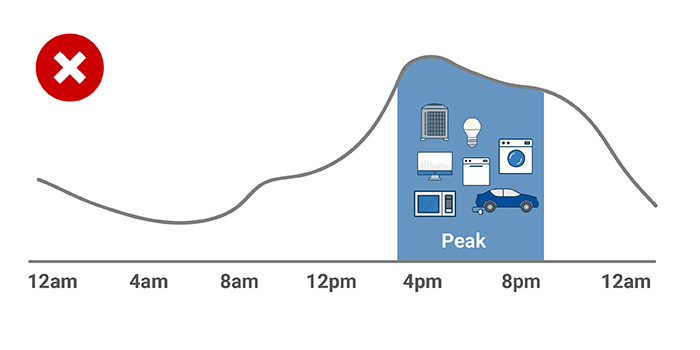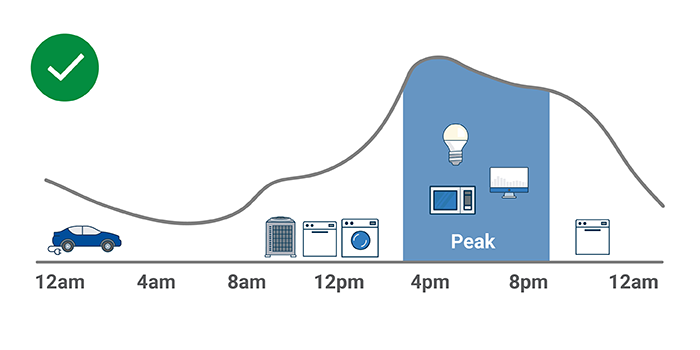Lower prices most of the day, with the highest peak price and overnight discount
This plan is similar to the Nights & Weekends Plan with three time periods, but has a larger increase between peak and super off-peak times. This means the plan requires the most effort to shift energy use, but you can save more if you're avoiding energy use during peak times and using energy overnight (to charge an EV, for example). Ver información en español.
To avoid paying a higher price for energy during peak periods, it's smart to shift energy use to mornings, overnight or weekends all-year-round with this plan. Peak prices occur all year (instead of just the summer months) with this plan, which also means savings opportunities all year if you're able to shift energy use to avoid peak times.
Not ready to switch to this plan? Use your Rate Comparison Tool to find out which plan best fits your household.






